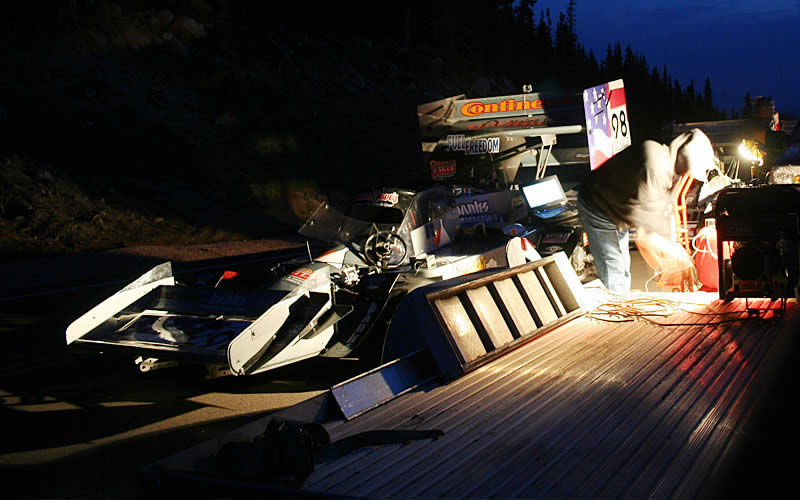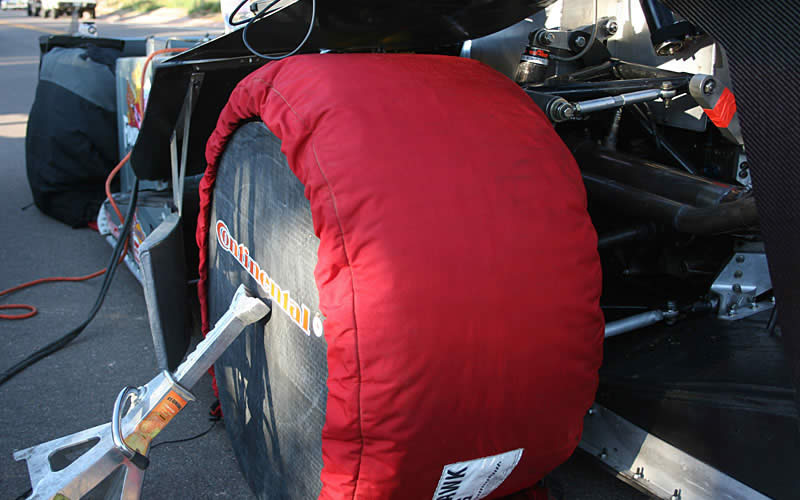FINAL PRACTICE: Still Fast, But Not Quite Perfect…
Dallenbach ran through the middle section of the course four times delivering consistent times with increased corner speeds in every run as the crew fine-tuned the chassis and the driver pushed the car.


Text: Chris Tobin
Photos: Gale Banks Engineering
After practice sessions on the top section of the mountain on Wednesday and both practice and qualifying on the lower section on Thursday the Dallenbach Racing/Banks Power #98 finally got a chance to run the middle section of the course on Friday. As we mentioned in our last update, the crew planned to have machine work done to mate the ring gear to the new limited slip differential. We’re happy to report that the machine work and subsequent transaxle teardown and rebuild was a total success. Paul Dallenbach reported that he likes the limited slip diff and the minor suspension tweaks the team performed to fine tune the ride helped it to handle the bumps in the road even better than before. The stickier Continental grooved slick tires are also working well and he is confident there is more that he can get out of the car!
Dallenbach ran through the middle section of the course four times delivering consistent times with increased corner speeds in every run as the crew fine-tuned the chassis and the driver pushed the car. His best pass through the section was 2-minutes 29.2 seconds with a top speed on RADAR of 144 MPH. Jean Philippe Dayraut posted a best section time of 2-minutes 27.9 seconds, a scant 1.3 seconds faster than Dallenbach’s RWD racer. Dayraut’s top speed was slower than Dallenbach’s at 138 MPH.
The crew was a little confused why Dallenbach was carrying more and more speed through the course but his top speeds were dropping off slightly. After analyzing the engine data they realized that a boost leak in the fabricated intake plenum began to develop on Wednesday afternoon. The Banks Power altitude compensation system was masking the leak and delivering more boost to compensate until the leak became large enough that the system could no longer keep up. The engineers feel that the boost leak probably caused a loss of at least 250-horsepower, so they feel very good about Dallenbach’s chances during the race when he will once again have the full 1,400-horsepower available to him.
Saturday is an off day on the mountain, but the crew will be busy welding and heavily reinforcing the intake plenum. They will also go over the car with a fine-toothed comb, making sure every single nut, bolt and piece is in its proper place and ready to race. In just one more day the rubber will meet the pavement for real and we expect to see the Dallenbach Racing/Banks Power driver and crew celebrating another overall win. Stay tuned here for updates and watch the race streamed live on the web at www.usacracing.com/ppihc and for the latest on the Team Dallenbach-Banks car and efforts go to www.bankspower.com/pikespeak



